Written by: Arne Koets
Edited by: Zhi Zhu
Over the last 15 years our loose band of jousting brothers, including Joram van Essen, Wouter Nicolai and myself among others, have been doing research and conducting various experiments regarding Medieval and Renaissance saddles and their use in contemporary jousting and mounted combat.
At first we mostly experimented with modified cavalry saddles of various kinds. These experiments gave rise to problems as the proportions were clearly wrong. All sorts of problems arose as a result of these modified saddles looking all right but being grossly out of proportion. This included the Royal Armouries ‘facsimile’ saddles, as we started to call them.
Later, we got the opportunity to examine and measure a number of historic saddles: the 'Elfenbein' saddle in the Royal Armouries,

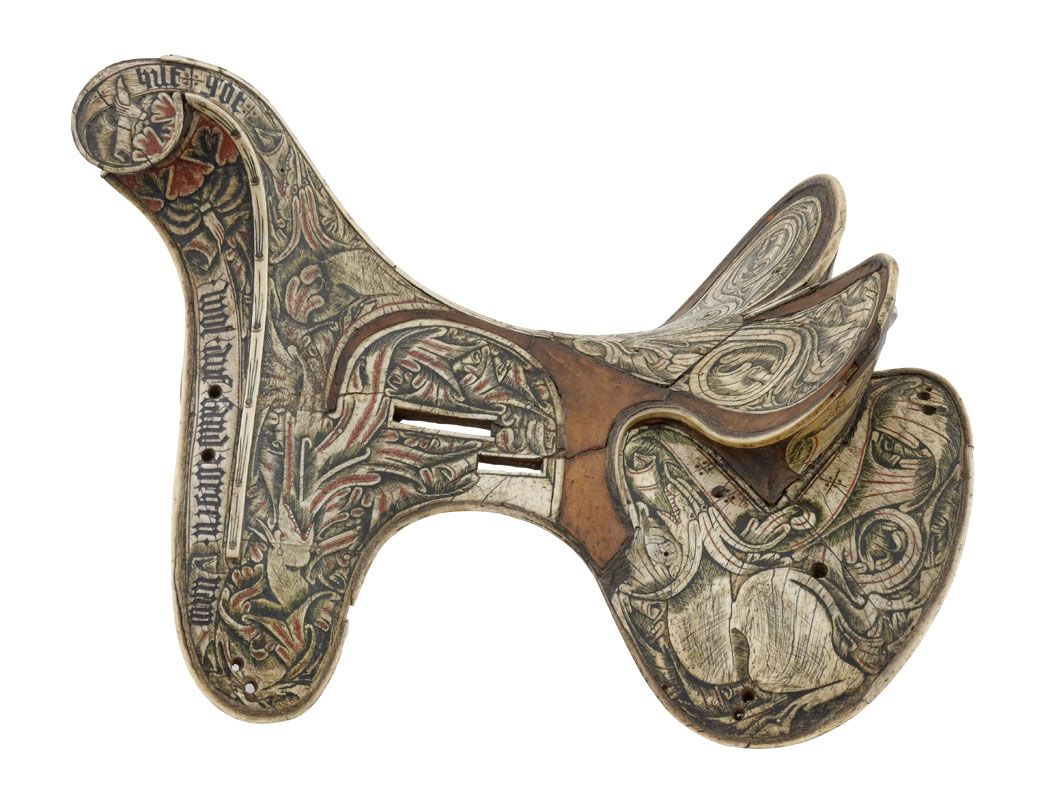
Saddle VI.95, 'Elfenbein' saddle, 'riding' style, 15th century Hungarian saddle, in the Royal Armouries(photo from Royal Armouries)
the saddles in the Wallace collection, including the A21 when it was off display,
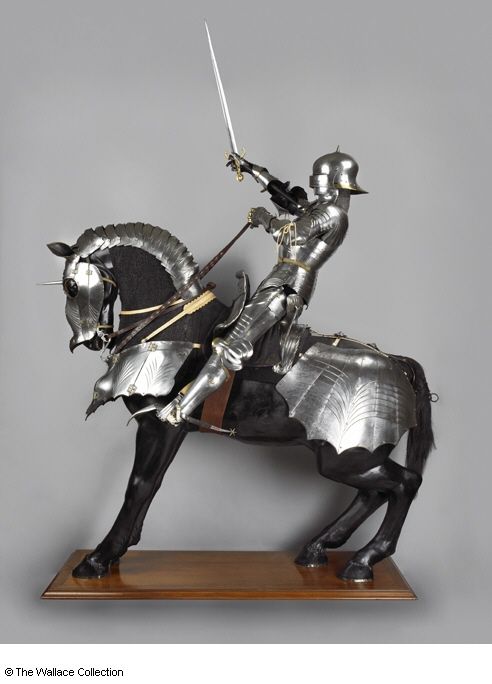
Equestrian Armour A21, featuring a 'war' saddle, in the Wallace Collection
(photo from The Wallace Collection)
the Arundel saddle and others. Various actual re-creations of these saddles were attempted over time.
The first attempts were mostly based around the raised seat concept of the so called ‘Henry V’ saddle and the Madrid saddle. The 'Henry V' saddle has an iron bar supporting the seat much like the wooden parts of the tree in Hohenzeug saddles(the saddles with the huge shields built into the fronts). Though there is some doubt as to whether this feature is original, it has shown to have some interesting effects.
Due to raising the seat, the weight of the rider acts as a lever, so that when any seat aid is applied, it is amplified. Unfortunately, it means that unbalanced riders are more detrimental to their horses. This is why I tend to call this style ‘the curb bit of saddles’.
This style of saddle does help greatly to get a good lower leg connection with the horse, especially when riding smaller horses. The raised seat makes it much easier for men over 180cm(apx 6') tall(not uncommon for nobility of the period, as archeological evidence from grave sites clearly shows) to ride horses under 15 hands high(so common in medieval times). However, the rider does lose the contact between the horse and the rider's inner thigh, meaning that the rider must depend more on the effect of the bit. Of course, guiding a horse using only the bit can be done to a high degree, as long rein work from classical dressage(and higher driving dressage, for that matter) clearly shows.
The style of riding necessitated by the raised seat saddle seems to be what Duarte describes in his treatise as the 'Third Style' of riding -- "those who ride firm and erect on the stirrups" -- frequently referred to as the 'a la brida' style of riding. This style of riding is commonly depicted, in particular in the second half of the 14th and the first quarter of the 15th century, but other styles of riding and saddles are also depicted throughout this time period.
However, many problems arose when we experimented with these raised seat saddles. They were uncomfortable, they could shift on the horses’ backs as a result of impact or imbalance, they were hard to fit, etc...So we decided that this style of saddle was not optimal for what we were trying to do and looked for other historic styles of saddles that might work better.
Two other styles of saddles that looked interesting enough to experiment with were what we came to call the ‘riding’ saddles and the ‘war' saddles of 'Bravante' style. Based on the description in Dom Duarte's treatise, we interpreted the ‘Bravante’ saddles to mean saddles similar in shape to the A21 saddle (which is a 16th century example) and one of the Vienna saddles(which is clearly datable to the middle of the 15th century, see photo below). The terms 'riding' and 'war' might be ambiguous, but they are at least descriptive.
We called the saddles with 'ears' enveloping the hips more extensively ‘war saddles’.

'Elfenbein' saddle, 'war' style, in the Kunst Historisches Museum Vienna
(photo by Andrea Carloni(Rimini))
The ‘riding’ saddles are the saddles shaped like all but two of the ‘Elfenbein’ saddles, (which are actually not covered in ivory, as the German term suggests, but bone).
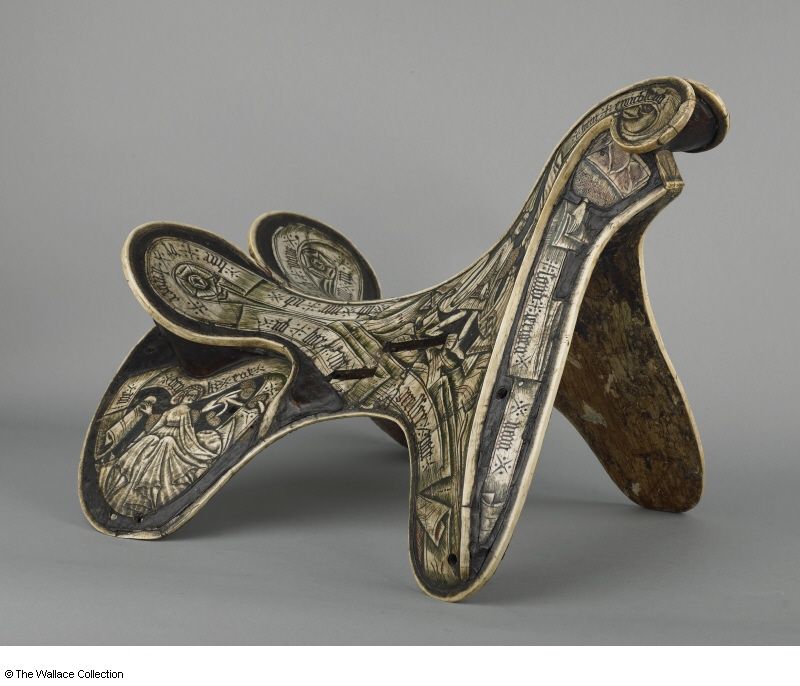
'Elfenbein' saddle A408, 'riding' style, in The Wallace Collection
(photo from The Wallace Collection)
It has to be noted that there are depictions of the ‘riding’ saddles being used in war, both by half armoured (fairly common) and fully armoured (fairly uncommon) men, and also for jousting. Also, the 'war' saddles are depicted being used for civilian purposes by riders in plain clothes, as in one of of the Schilling Chronicles (Tschachtlanchronik of 1470). However, the numbers are very skewed towards their named uses.
Bearing in mind medieval issues of logistics, it makes perfect sense that a saddle was generally transported by the animal it was meant to be worn by. Therefore one had to make do with what one had at hand. Also, it seems reasonable that some fighters only could afford a 'riding' saddle and not an additional 'war' saddle, which would explain why depictions of the half armoured fighters make up 1/3 of the depictions of 'riding' saddles.
Both these saddle types derive from the same side board layout, however, and both types are made as continual composite blocks of wood.
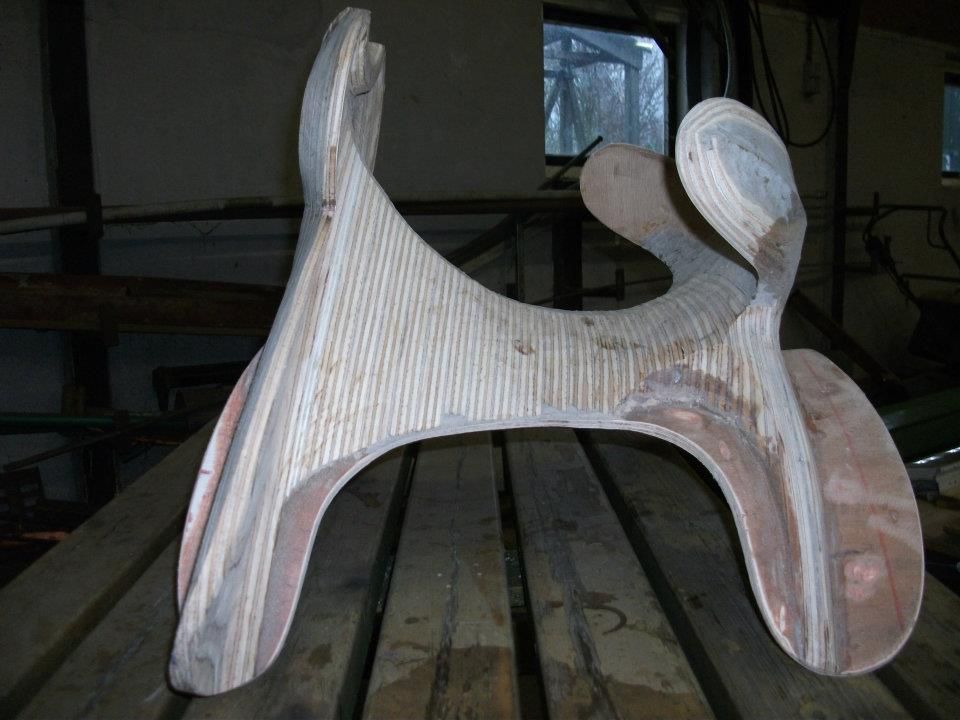
Many pieces of wood are combined to form the composite that creates the saddle's form
(photo by Joram van Essen)
(Although the later 16th century examples of these war saddles are made of just the side boards with the seat shape made of felt, covered in leather… and they are just as hard to the touch.)
This side board layout is where the plot thickens: the side boards are an inverted u-shape. Meaning that the side boards are comparatively narrow in the middle, but much wider in the front and back of the saddle, ‘drooping’ down the sides of the horse.
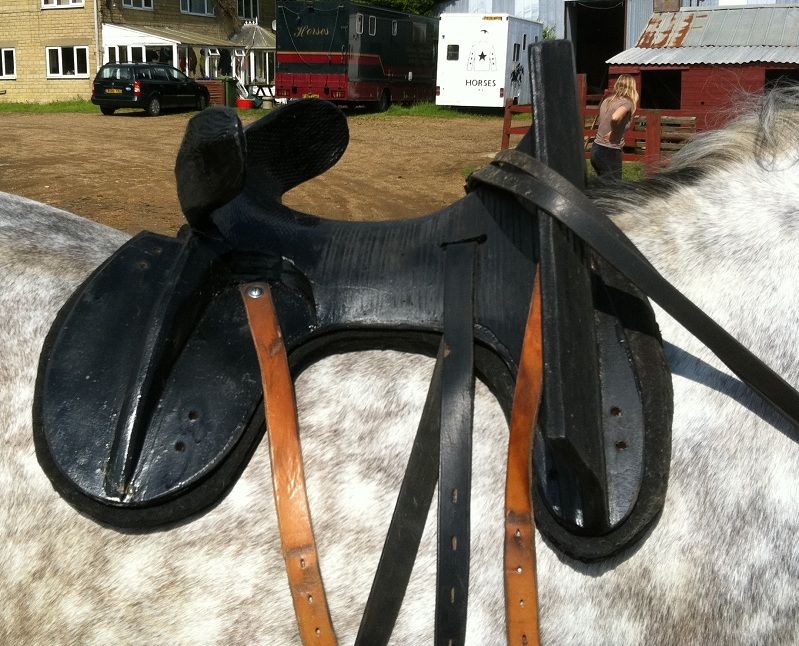
The side boards are the parts of the saddle that form an inverted U against the sides of the horse and that support the seat of the saddle(photo by Arne Koets)
This is similar to the shape of the cushions on Iberian saddles, yet, unlike the Iberian saddles, this shape is actually part of the trees in these historic saddles, and thereby interact with the horse in different ways.
Most professional saddlers we initially talked to took one look at the photos and immediately (by misinterpreting the scale) assumed that these saddle boards would restrict the horse very badly. The professionals shied away from the project in droves. It was the work some re-enactors -- Robert McPherson among others -- did in attempting to re-create these historic saddles that made real contributions to our understanding of what we were looking at when we handled the originals.
Based on the information gathered from historic sources and contemporary re-enactors, Joram van Essen and Wouter Nicolai made a plethora of experimental saddles with varying levels of success. Unlike other re-enactors who were trying to incorporate modern saddlery into historic looking saddles, Joram and Wouter were much more ambitious about their experiments and goals of historical correctness, trying to make their saddles as close to the originals as possible. What was learned from these initial reproductions led to the development of ergonomic and effective saddles that are not only historical, but also ergonomic to the horse and rider.
Joram and Wouter's historically based saddles will be discussed further in:
Re-Creating Medieval and Renaissance Saddles: Part Two
Edited by: Zhi Zhu
Over the last 15 years our loose band of jousting brothers, including Joram van Essen, Wouter Nicolai and myself among others, have been doing research and conducting various experiments regarding Medieval and Renaissance saddles and their use in contemporary jousting and mounted combat.
At first we mostly experimented with modified cavalry saddles of various kinds. These experiments gave rise to problems as the proportions were clearly wrong. All sorts of problems arose as a result of these modified saddles looking all right but being grossly out of proportion. This included the Royal Armouries ‘facsimile’ saddles, as we started to call them.
Later, we got the opportunity to examine and measure a number of historic saddles: the 'Elfenbein' saddle in the Royal Armouries,


Saddle VI.95, 'Elfenbein' saddle, 'riding' style, 15th century Hungarian saddle, in the Royal Armouries(photo from Royal Armouries)
the saddles in the Wallace collection, including the A21 when it was off display,

Equestrian Armour A21, featuring a 'war' saddle, in the Wallace Collection
(photo from The Wallace Collection)
the Arundel saddle and others. Various actual re-creations of these saddles were attempted over time.
The first attempts were mostly based around the raised seat concept of the so called ‘Henry V’ saddle and the Madrid saddle. The 'Henry V' saddle has an iron bar supporting the seat much like the wooden parts of the tree in Hohenzeug saddles(the saddles with the huge shields built into the fronts). Though there is some doubt as to whether this feature is original, it has shown to have some interesting effects.
Due to raising the seat, the weight of the rider acts as a lever, so that when any seat aid is applied, it is amplified. Unfortunately, it means that unbalanced riders are more detrimental to their horses. This is why I tend to call this style ‘the curb bit of saddles’.
This style of saddle does help greatly to get a good lower leg connection with the horse, especially when riding smaller horses. The raised seat makes it much easier for men over 180cm(apx 6') tall(not uncommon for nobility of the period, as archeological evidence from grave sites clearly shows) to ride horses under 15 hands high(so common in medieval times). However, the rider does lose the contact between the horse and the rider's inner thigh, meaning that the rider must depend more on the effect of the bit. Of course, guiding a horse using only the bit can be done to a high degree, as long rein work from classical dressage(and higher driving dressage, for that matter) clearly shows.
The style of riding necessitated by the raised seat saddle seems to be what Duarte describes in his treatise as the 'Third Style' of riding -- "those who ride firm and erect on the stirrups" -- frequently referred to as the 'a la brida' style of riding. This style of riding is commonly depicted, in particular in the second half of the 14th and the first quarter of the 15th century, but other styles of riding and saddles are also depicted throughout this time period.
However, many problems arose when we experimented with these raised seat saddles. They were uncomfortable, they could shift on the horses’ backs as a result of impact or imbalance, they were hard to fit, etc...So we decided that this style of saddle was not optimal for what we were trying to do and looked for other historic styles of saddles that might work better.
Two other styles of saddles that looked interesting enough to experiment with were what we came to call the ‘riding’ saddles and the ‘war' saddles of 'Bravante' style. Based on the description in Dom Duarte's treatise, we interpreted the ‘Bravante’ saddles to mean saddles similar in shape to the A21 saddle (which is a 16th century example) and one of the Vienna saddles(which is clearly datable to the middle of the 15th century, see photo below). The terms 'riding' and 'war' might be ambiguous, but they are at least descriptive.
We called the saddles with 'ears' enveloping the hips more extensively ‘war saddles’.

'Elfenbein' saddle, 'war' style, in the Kunst Historisches Museum Vienna
(photo by Andrea Carloni(Rimini))
The ‘riding’ saddles are the saddles shaped like all but two of the ‘Elfenbein’ saddles, (which are actually not covered in ivory, as the German term suggests, but bone).

'Elfenbein' saddle A408, 'riding' style, in The Wallace Collection
(photo from The Wallace Collection)
It has to be noted that there are depictions of the ‘riding’ saddles being used in war, both by half armoured (fairly common) and fully armoured (fairly uncommon) men, and also for jousting. Also, the 'war' saddles are depicted being used for civilian purposes by riders in plain clothes, as in one of of the Schilling Chronicles (Tschachtlanchronik of 1470). However, the numbers are very skewed towards their named uses.
Bearing in mind medieval issues of logistics, it makes perfect sense that a saddle was generally transported by the animal it was meant to be worn by. Therefore one had to make do with what one had at hand. Also, it seems reasonable that some fighters only could afford a 'riding' saddle and not an additional 'war' saddle, which would explain why depictions of the half armoured fighters make up 1/3 of the depictions of 'riding' saddles.
Both these saddle types derive from the same side board layout, however, and both types are made as continual composite blocks of wood.

Many pieces of wood are combined to form the composite that creates the saddle's form
(photo by Joram van Essen)
(Although the later 16th century examples of these war saddles are made of just the side boards with the seat shape made of felt, covered in leather… and they are just as hard to the touch.)
This side board layout is where the plot thickens: the side boards are an inverted u-shape. Meaning that the side boards are comparatively narrow in the middle, but much wider in the front and back of the saddle, ‘drooping’ down the sides of the horse.

The side boards are the parts of the saddle that form an inverted U against the sides of the horse and that support the seat of the saddle(photo by Arne Koets)
This is similar to the shape of the cushions on Iberian saddles, yet, unlike the Iberian saddles, this shape is actually part of the trees in these historic saddles, and thereby interact with the horse in different ways.
Most professional saddlers we initially talked to took one look at the photos and immediately (by misinterpreting the scale) assumed that these saddle boards would restrict the horse very badly. The professionals shied away from the project in droves. It was the work some re-enactors -- Robert McPherson among others -- did in attempting to re-create these historic saddles that made real contributions to our understanding of what we were looking at when we handled the originals.
Based on the information gathered from historic sources and contemporary re-enactors, Joram van Essen and Wouter Nicolai made a plethora of experimental saddles with varying levels of success. Unlike other re-enactors who were trying to incorporate modern saddlery into historic looking saddles, Joram and Wouter were much more ambitious about their experiments and goals of historical correctness, trying to make their saddles as close to the originals as possible. What was learned from these initial reproductions led to the development of ergonomic and effective saddles that are not only historical, but also ergonomic to the horse and rider.
Joram and Wouter's historically based saddles will be discussed further in:
Re-Creating Medieval and Renaissance Saddles: Part Two

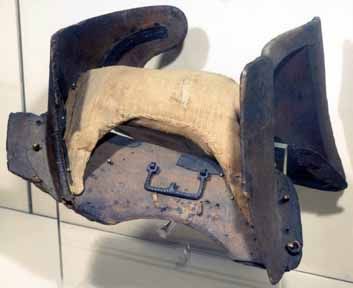
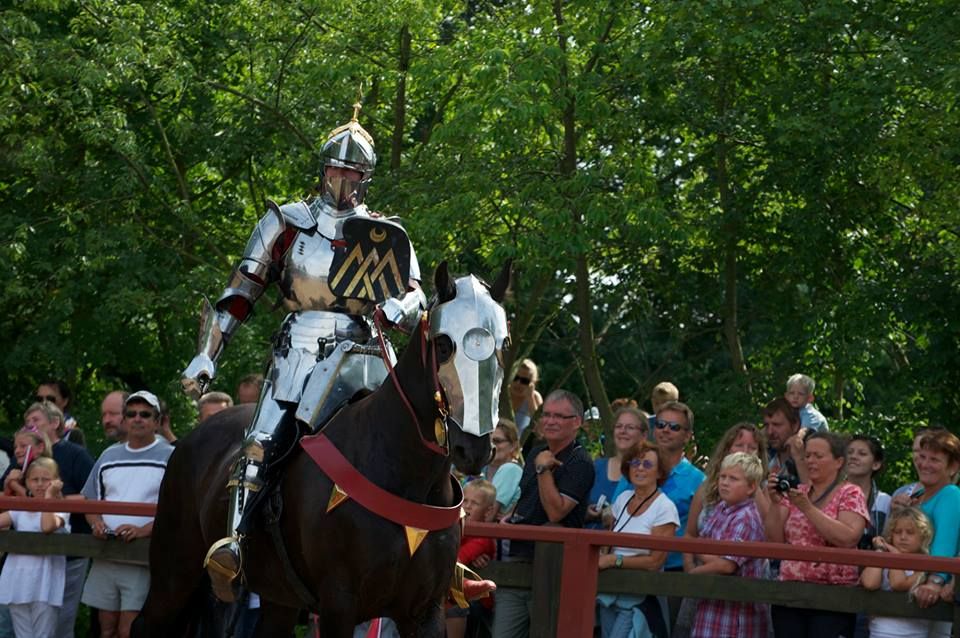
No comments:
Post a Comment